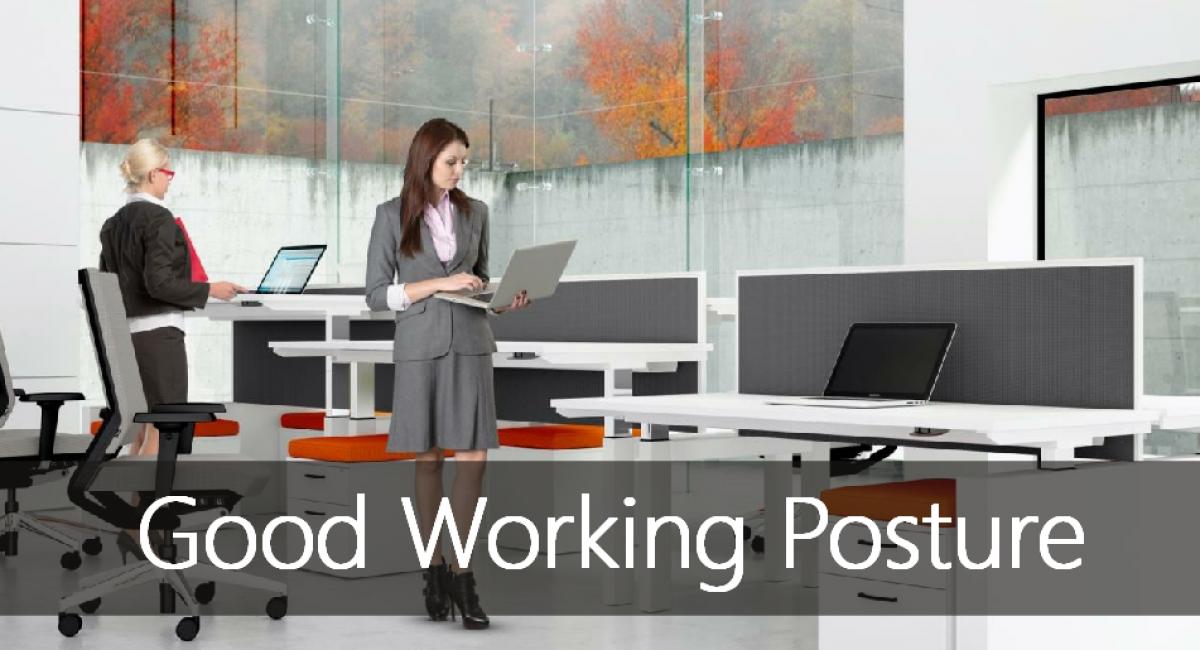
With the internet full of statistics and studies about the effect of good and poor posture and how it can affect almost every part of our bodies, have you ever stopped and thought about your own posture and the unnecessary strain you are putting on your muscles and ligaments, and what knock-on effect it can have on your general health?
We don’t want to overload you with facts, figures and scare stories, but we would like to help educate you so you can make adjustments that will help ensure you’re sitting healthily and comfortably every day.
Let’s start at the beginning; posture is the position in which you hold your body, and we can put this into two groups – ‘dynamic posture’ and ‘static posture’ which are as equally as important as each other. Dynamic posture describes how you hold yourself when you are mobile and moving around, including walking, running, bending and lifting. Static posture is how you hold yourself when you are still, this will include when you are sitting at your desk, standing, or laying down.
The key to good posture starts with our spine. A spine has three natural curves, starting at the neck, the middle of the back and the lower back. Good posture will help maintain these curves; however, poor posture can easily become a habit and second nature, causing aggravating episodes of back and neck pain that can lead to long-term damage to spinal structures.
So now we understand the importance of good posture, the next part of our blog explains how we can easily introduce good postural positions into our daily lifestyle.
The following are small steps and changes we can all make in the workplace to ensure we maintain a good and healthy wellbeing:
Hopefully, you are feeling a little more aware of correct working positions, but it’s important to also assess your furniture set-up and accessories to ensure you can always sit more comfortably!
There are many HSE regulations in place (you can read the full regulations and further information from the HSE website, however, briefly the regulations require:
- Employers to analyse workstations to assess and reduce risk
- Ensure that workstations meet minimum requirements
- Plan work activities so that they include breaks or changes in activities
Office Desks
Starting with your office desk, answer the following three questions:
The office desk is a key piece of workplace furniture. The style of desk needs to best fit your body, routine and tasks to be completed and can vary from a straight rectangular desk, a wave desk, a curved desk, a desk with a consultancy end, or an adjustable height ‘sit stand’ desk.
To find out more about office desks, take a look at our previous blog that explores desk ranges and helpful advice in buying the correct furniture.
Office Seating
How much of your day is spent sitting? Statistics show a staggering average of 95% of an office workers day, can be spent sitting at their desk, so choosing the right office chair is essential in helping to prevent bad posture and ongoing health problems.
A good ergonomic chair will support the lower back, helping to make sure you’re reducing the aches and pains that can occur after sitting in the same position for long periods of time.
An office chair should be adjustable with:
To help find the perfect chair to suit your personal needs and requirements, we offer complimentary chair assessments that take into account your height, weight, build and back requirements to ensure the chair is totally bespoke to your postural needs. To find out more about our DSE assessments, demo chair availability, onsite consultations or showroom facilities please get in touch, we’d be happy to help.
Accessories
Desktop accessories can include everything from your monitor, keyboard, and footrest.
Monitor:
The height of the monitor screen casing should be in line with the eyes and at a distance of 580-710mm for 12pt font.
Keyboards
The objective is to keep the hands and wrists in as “neutral” a position as possible. Keyboard adjustments may include tilting the keyboard and optional wrist rests placed in front of the keyboard.
Footrest:
Whilst sitting at your desk, if your feet don’t sit on the floor comfortably or you are experiencing aching knees, legs, and ankles, a footrest may be the solution for you. Under the desk footrests, are designed to help support your legs starting at your feet whilst taking the strain off your thighs to keep you comfortable whilst sitting at your workstation.
The good news is poor postural habits can be changed! Good posture and furniture ergonomics can help correct and improve your general wellbeing.
Next time you’re standing, sitting or lying down, stop and access your bodies position and remind yourself of the positive effects of good posture on your body and mind, and how it can improve and in some cases eliminate unnecessary body stress including backache, neck and joint pain, headaches and a whole host of other extensive medical problems including obesity and heart disease.





Cambridgeshire
Unit 6-8 Centree House
River Road
Bicton Industrial Park
Kimbolton
Cambridgeshire
PE28 0LQ
Suffolk
Suite 3.11, Felaw Maltings
44 Felaw Street
Ipswich
Suffolk
IP2 8SJ
